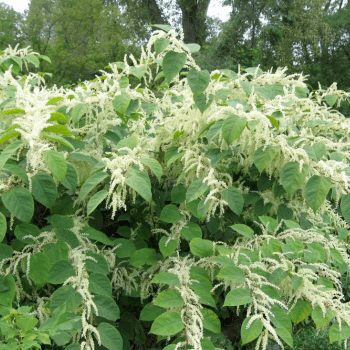
INNSA Standard
CREATING A WASTE MANAGEMENT AREA FOR JAPANESE KNOTWEED
On sites where Japanese knotweed is present in development areas, it is sometimes possible to avoid removing materials to landfill and to facilitate herbicide treatment by relocating contaminated material to a waste management area (WMA). A WMA is a bund – a mound of soils – where the Japanese knotweed can be chemically treated over a period of years without interfering with the development.
Where there will be a delay before the relocation is carried out, you should apply a non-persistent herbicide such as glyphosate to reduce the growth of the viable material, if the plant is in leaf.
You should choose a suitable location for the WMA in an area not earmarked for future development, landscaping to the installation of roads, public open space or services. Ensure the chosen area is not likely to be disturbed, at risk of significant erosion or used as a path for vehicles, people of animals – all of which could result in cross-contamination.
The location of the WMA should be accurately recorded on the relevant documentation (deeds, site plans and the KMP) to ensure that is is properly managed in the long term, You should advise the local environment agency office of the location of the WMA.
If the whole of the area designated for the WMA is not already contaminated with Japanese knotweed, then a suitable root barrier membrane should be installed on the surface beneath the WMA to prevent cross-contamination. The membrane should extend significantly beyond the base of the bund on each side.
It is vital the integrity if the membrane is maintained at all times, that there are no holes in the membrane and that the welds between the different sections of the membrane are perfectly sealed along their full length. INNSA recommend to all clients that this operation is undertaken by an experienced specialist contractor.
Many root barrier membranes are available which claim to prevent Japanese knotweed penetrating. Given that the rhizomes may remain dormant for 20 years, it is important that the supplier of the membrane gives a guarantee exceeding this, with a minimum specification of 50 years or greater.
The WMA should be built up in layers, with more viable sections of rhizome being placed towards the top of the WMA to encourage their growth, in order to facilitate effective herbicide treatment.
The WMA should be “weathered” (the sides packed, graded and made smooth) so that it retains its shape and structure over the years.
Suitable fencing and signage should be installed around the WMA to prevent unauthorised access and alert contractors to the presence of contaminated material, therefore reducing the likelihood of cross-contamination.
The materials in the WMA should be treated as contaminated during and after herbicide treatment, even if no growth has been recorded.
Chemical herbicide treatment should then be carried out as normal on the growth which emerges from the WMA.
